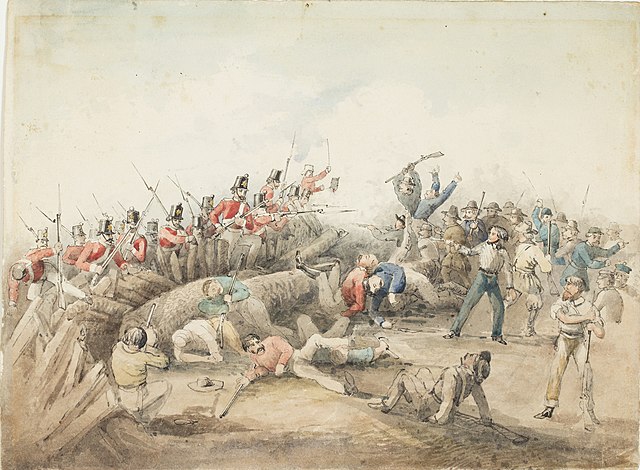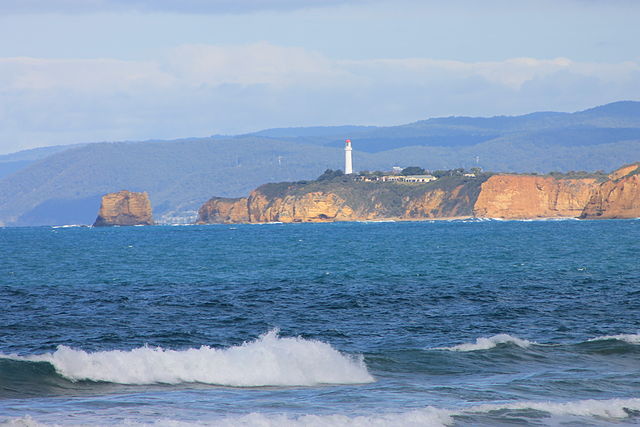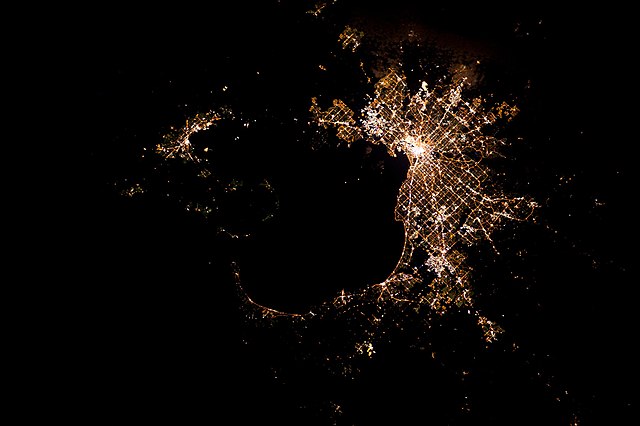The Eureka Rebellion was a series of events involving gold miners who revolted against the British colonial government in Victoria, Australia during the Victorian gold rush. It culminated in the Battle of the Eureka Stockade, which took place on 3 December 1854 at Ballarat between the rebels and the colonial forces of Australia. The fighting left at least 27 dead and many injured, most of the casualties being rebels. There was a preceding period beginning in 1851 of peaceful demonstrations and civil disobedience on the Victorian goldfields. The miners, many of whom such as Raffaello Carboni came from Europe and were veterans of the Revolutions of 1848, had various grievances, chiefly the cost of mining permits and the officious way the system was enforced.
Eureka Stockade Riot by John Black Henderson, 1854
A gold mining licence issued to Raffaello Carboni
Great Meeting of Gold Diggers Dec 15th 1851 engraved by Thomas Ham and drawn by D. Tulloch, 1851
Charles Doudiet's sketch of the burning of Bentley's Hotel, entitled Eureka Riot 17th October (1854)
Victoria is a state in southeastern Australia. It is the second-smallest state, with a land area of 227,444 km2 (87,817 sq mi); the second-most-populated state, with a population of over 6.7 million; and the most densely populated state in Australia. Victoria is bordered by New South Wales to the north and South Australia to the west and is bounded by the Bass Strait to the south, the Great Australian Bight portion of the Southern Ocean to the southwest, and the Tasman Sea to the southeast. The state encompasses a range of climates and geographical features from its temperate coastal and central regions to the Victorian Alps in the northeast and the semi-arid northwest.
Swearing Allegiance to the Southern Cross at the Eureka Stockade on 1 December 1854 – watercolour by Charles Doudiet
Island Archway on the Great Ocean Road in Victoria, Australia
Aireys Inlet
Greater Melbourne at night from the International Space Station








